WORKIN' ON THE RAILROAD
WORKIN' ON THE RAILROAD
PHOTOGRAPHS BY MENG QlNGCHUN (孟慶春)
TEXT BY llU JUE (劉玨)
A look at the hardworking laborers and equipment that make China's high-speed rails
鐵道上如火如荼的日子
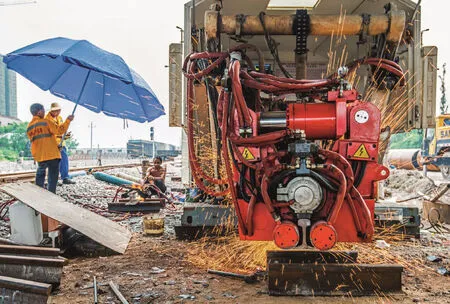
For almost seven years, workers from the China Railway Engineering Corporation have been building the Guiyang-Guangzhou High-speed Railway (貴廣高鐵), connecting the two capital cities of the Southwest province of Guizhou and the seaside province of Guangdong through Guangxi. Like many of its kind, this 857-kilometer railway has a design speed of 300 kilometers an hour, cutting short the almost 20-hour journey down to four. The workers are faced with mountains, valleys, and countless rivers along the way; more than half of the railroad goes through tunnels and more than one fi fth requires bridges. But Guizhou and Guangxi are not to be dissuaded, sending workers to toil around the clock. As of August this year, the Guizhou and Guangxi section have already opened for testing.
Much like the workers on the Great Wall, the laborers on the high-speed railway have garnered fame for their painstaking efforts, undertaking various impressive projects, working their way through some of China's most mountainous areas in the scorching summer sunshine. This series of images showing the bustling construction site and the hardworking laborers were taken by local photographer Meng Qingchun overa month, trekking along the Nanhai section of the railroad. At times, his presence would alarm the site managers; they would chase him away for fear that he was an undercover journalist seeking to expose safety violations on their site. But most of the time, he was welcomed by the workers as an interesting stranger who added a little color to their otherwise monotonous daily life.
lABORERS CUT THE RAllWAY llNES FOR THE GUlYANG-GUANGZHOU HlGH-SPEED RAll lN GUANGDONG

lN THE OPPRESSlVE SOUTHERN, SUMMER HEAT, A lABORER COATS THE lNSlDE OF A STEEl TUBE THAT Wlll lATER BE STUCK lNTO THE GROUND AND FlllED WlTH CEMENT TO SERVE AS A BRlDGE COlUMN
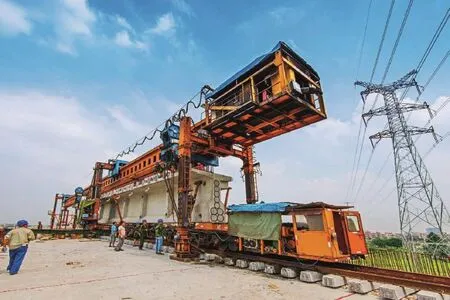
BRlDGE PARTS ARE TRANSPORTED ON A TEMPORARY RAllROAD TO THE CONSTRUCTlON SlTE

THlS 857-KllOMETER RAllWAY REQUlRES AN ASTOUNDlNG AMOUNT OF RAllROAD TlES
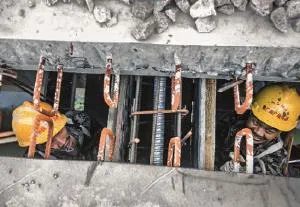
WORKERS BRAVE CRAMPED AND SOMETlMES DANGEROUS CONDlTlONS UNDERGROUND TO ENSURE THE SAFETY OF THE RAllROAD

BUT, JUST llKE EVERYONE ElSE, THEY ENJOY FlDDllNG ON THElR SMART PHONES lN THElR DOWNTlME
A 12-year-old boy with fair skin and round face from Guangdong Province embarked on an adventure as one of the first government sponsored students to study in the US in 1872. He went on to become the first Chinese railroad chief engineer and the Father of China's Railroads. Zhan Tianyou(詹天佑)
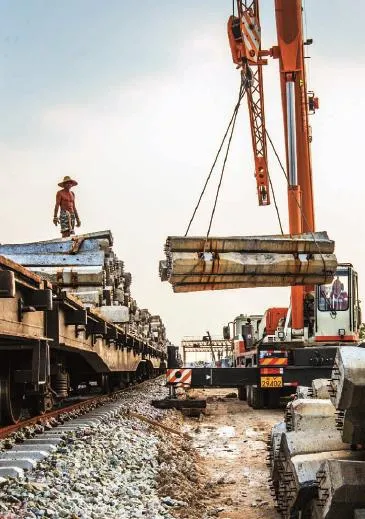
THE EFFORT lN TRANSPORTlNG RAllROAD TlES lS COSTlY AND DlFFlCUlT lN THlS HECTlC TERRAlN

FATHER OF CHlNA'S RAllROADS
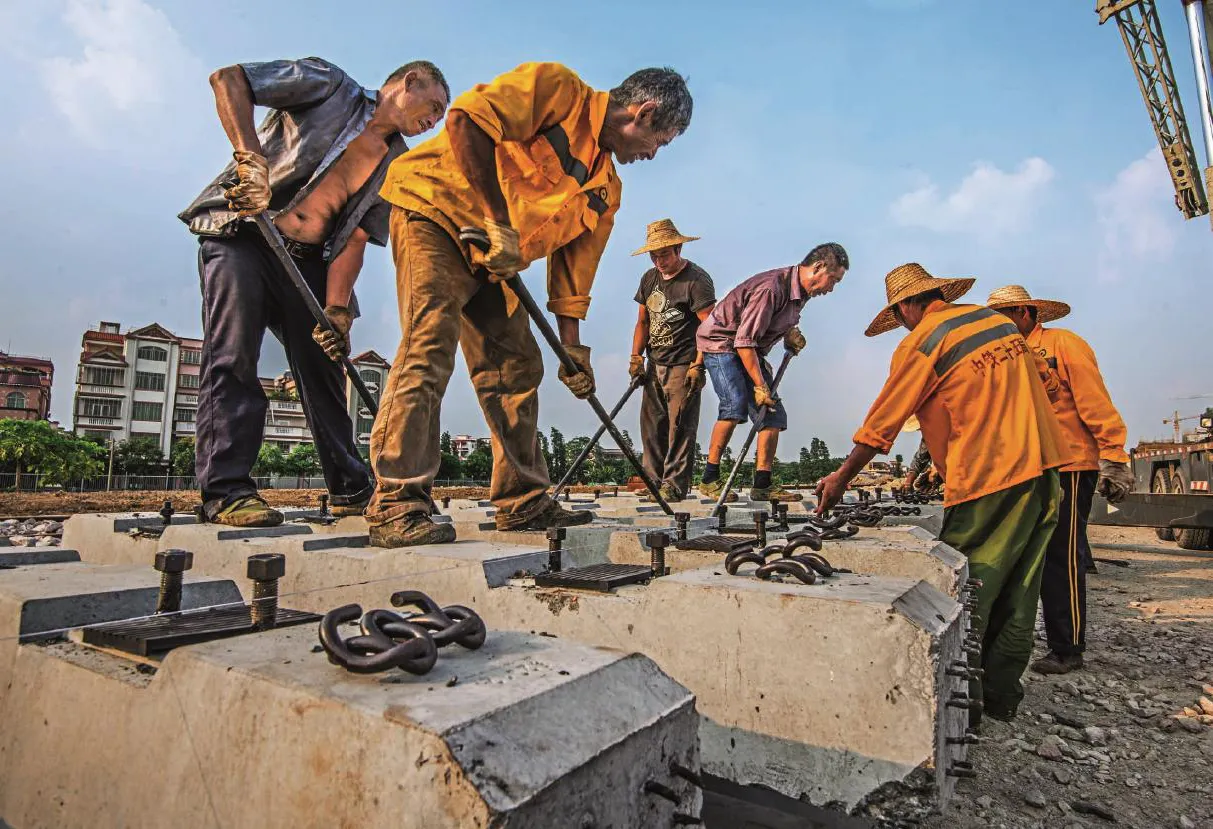
MACHlNES CAN ONlY DO SO MUCH, AS WORKERS HAND READY THE TlES FOR THE RAllSconstructed the first railway in China without foreign assistance. His masterpiece, the famous Beijing-Zhangjiakou Railroad, has served the country for over a century and was retired this July. A bronze statue of Zhan can be found in Qinglongqiao Station, Yanqing County, Beijing.
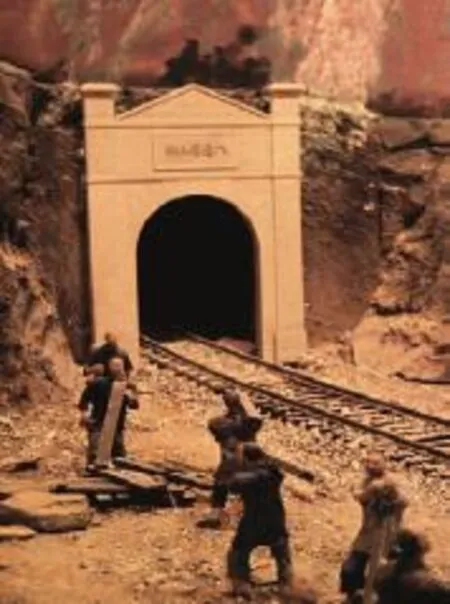
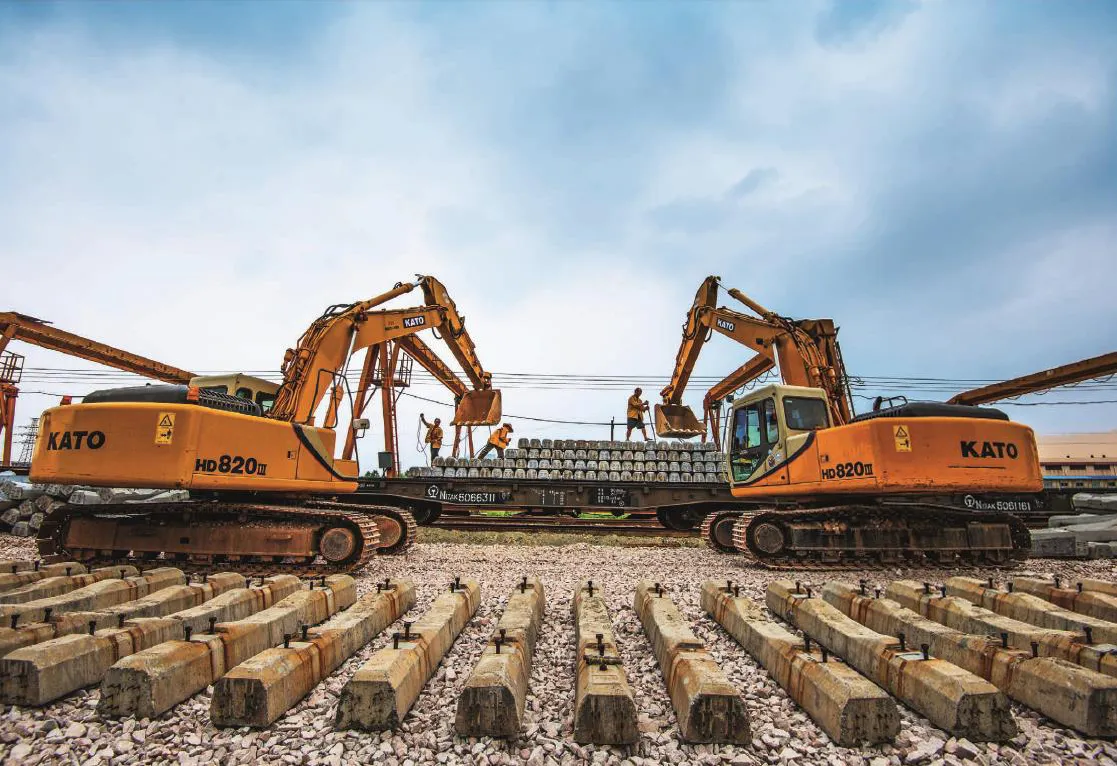
HlGH-SPEED RAll DlPlOMACY
Just this year, China has taken on high-speed rail projects in Venezuela, Brazil, Turkey, Nigeria, and various South East Asian countries. China is also currently in negotiation with 17 countries concerning future high-speed railway networks to connect Central Asia, East Asia, and SoutheastAsia. Once complete, travelers can board at King's Cross Station in London and arrive in Beijing in less than two days; a journey of 10,000 kilometers from Beijing to Singapore will take as little as three days.
WlTH A GOAl OF 300 KllOMETERS A DAY, WORKlNG AND WEll-CARED-FOR EARTHMOVERS ARE ESSENTlAl
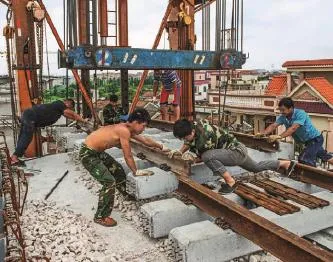
WORKERS FlT THE RAllROAD TRACKS TO THE TlES
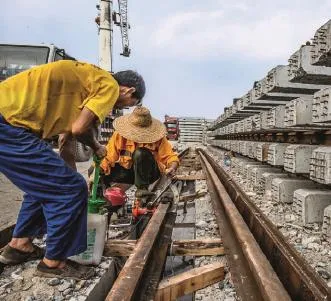
lABORERS MAlNTAlN THE TEMPORARY RAll TO KEEP THE RESOURCES COMlNG lN WHEN THEY ARE NEEDED

